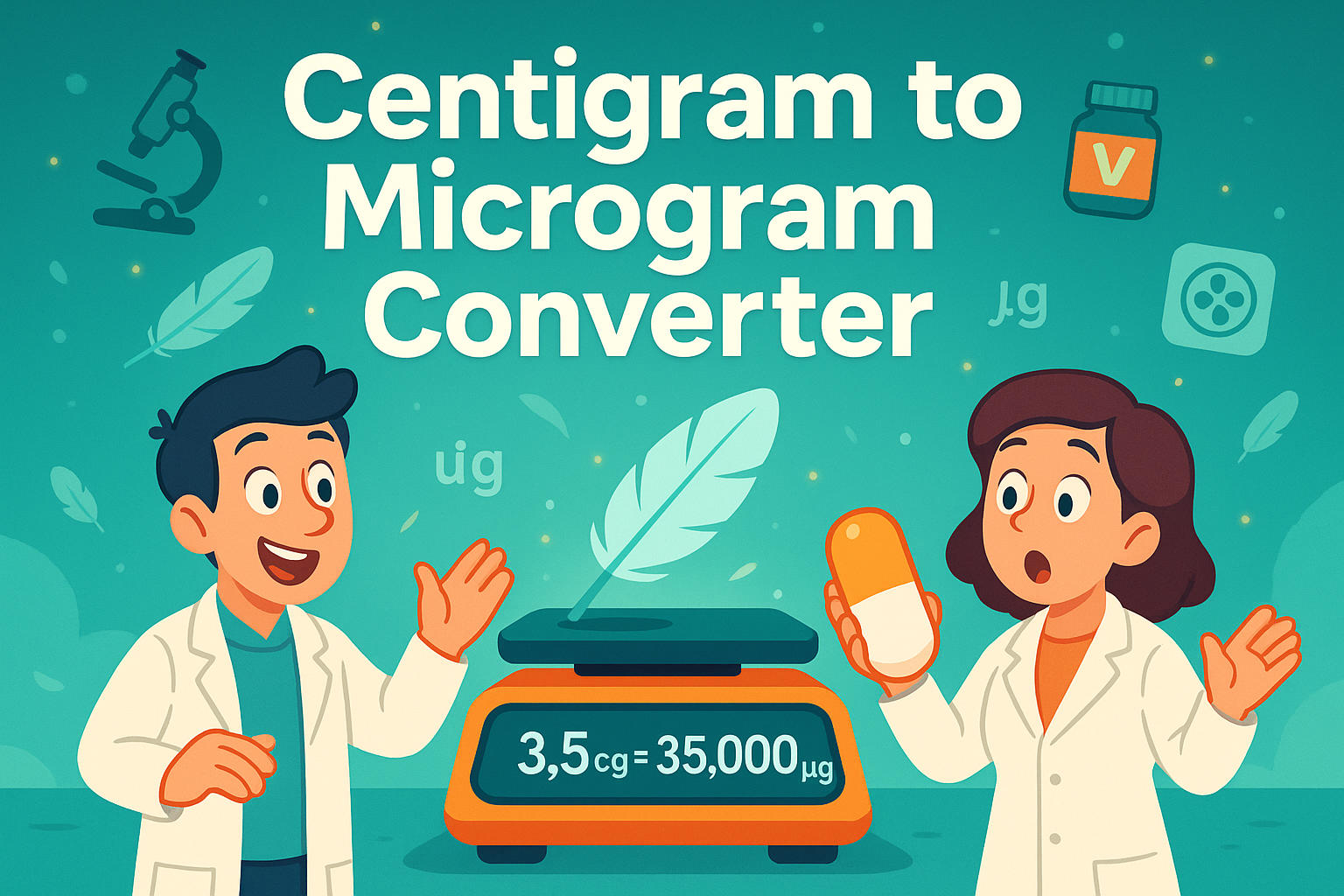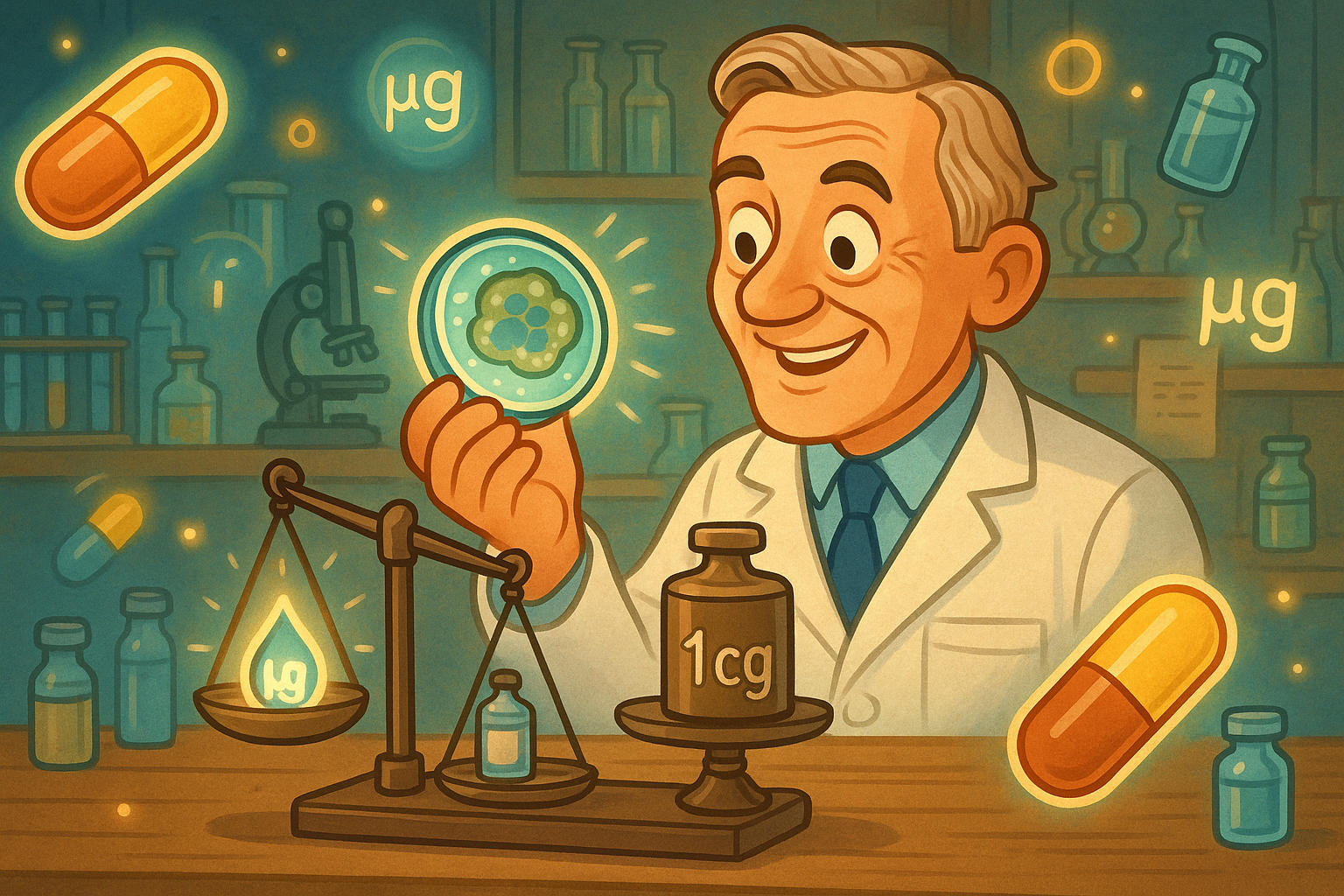centigram to microgram - How to convert cg to µg
Precision matters—especially when you’re working with micro-units. If you need to convert centigrams to micrograms (cg to µg), this guide will walk you through the formula, the units, and the easiest way to get accurate results using our free Conversion Tool.
Centigrams and Micrograms
A centigram (cg) is a unit of mass in the metric system, equal to 1/100 of a gram, or 0.01 g. It’s used in fields where lightweight items require fine measurement, like pharmaceutical dosages or scientific research.
The prefix “centi-” comes from Latin, meaning “one hundredth.” You’ll often find centigrams in lab equipment readings or nutritional supplement dosages that demand two decimal point accuracy.
A microgram (µg) is an even smaller unit of mass, equal to 1/1,000,000 of a gram. Micrograms are widely used in medicine, nutrition labeling, environmental science, and microengineering—anywhere ultra-precise weight matters.
Need to explore more mass conversions? Try our Weight Converter for all metric unit options in one place.

How to Convert cg to µg
The conversion is straightforward:
1 cg = 10⁴ µg
To convert any centigram value to micrograms, multiply it by 10,000.
Example:
Let’s convert 3.5 cg to micrograms:
3.5 × 10,000 = 35,000 µg
Need an instant answer? Use our Conversion Tool for quick, accurate results—perfect for lab reports, dosing charts, or even science fair projects.
Did you know?
-
A centigram is almost exactly the weight of a small feather—scientists use this comparison to calibrate precision balances.
-
The World Health Organization (WHO) often reports daily vitamin requirements in micrograms, especially for micronutrients like Vitamin B12 (2.4 µg/day) or Vitamin K (90–120 µg/day).
-
Centigrams are commonly used to label chemical concentrations in school science kits, giving students a real-world introduction to micro-measurement.
-
Microgram precision is essential in air quality control, where pollutant thresholds are often set in µg/m³.
-
Some allergy medications contain only 50 micrograms of the active ingredient—precision that makes unit conversion critical in pharmaceuticals.
The Discovery of Micrograms in Penicillin
In 1928, Alexander Fleming discovered penicillin—but it wasn’t until years later that scientists learned how to dose it correctly. The active antibacterial compound in penicillin was so potent, it needed to be administered in microgram-level quantities.
One of the biggest challenges in early penicillin research was determining how much to give a patient. Initial experiments relied on crude balances until improved laboratory tools were developed to measure centigram and microgram amounts accurately.
This leap in micro-measurement changed medicine forever. By the 1940s, pharmaceutical companies were measuring dosages down to the microgram—and lives were being saved as a result.
Fleming’s breakthrough not only led to a medical revolution, but also to the widespread adoption of microgram-scale measurement in pharmaceutical science—a practice that remains vital today.

Conclusion
Converting centigram to microgram (cg to µg) is a simple task with a big impact in high-precision fields. Whether you’re working in a lab, a hospital, or an academic setting, getting your conversions right matters. Use Jetcalculator’s Conversion Tool for reliable results, every time.
Don’t stop here—explore our full library and keep your calculations consistent with our Weight Converter. For recipes, lab work, or dosing, accuracy starts with the right unit.

